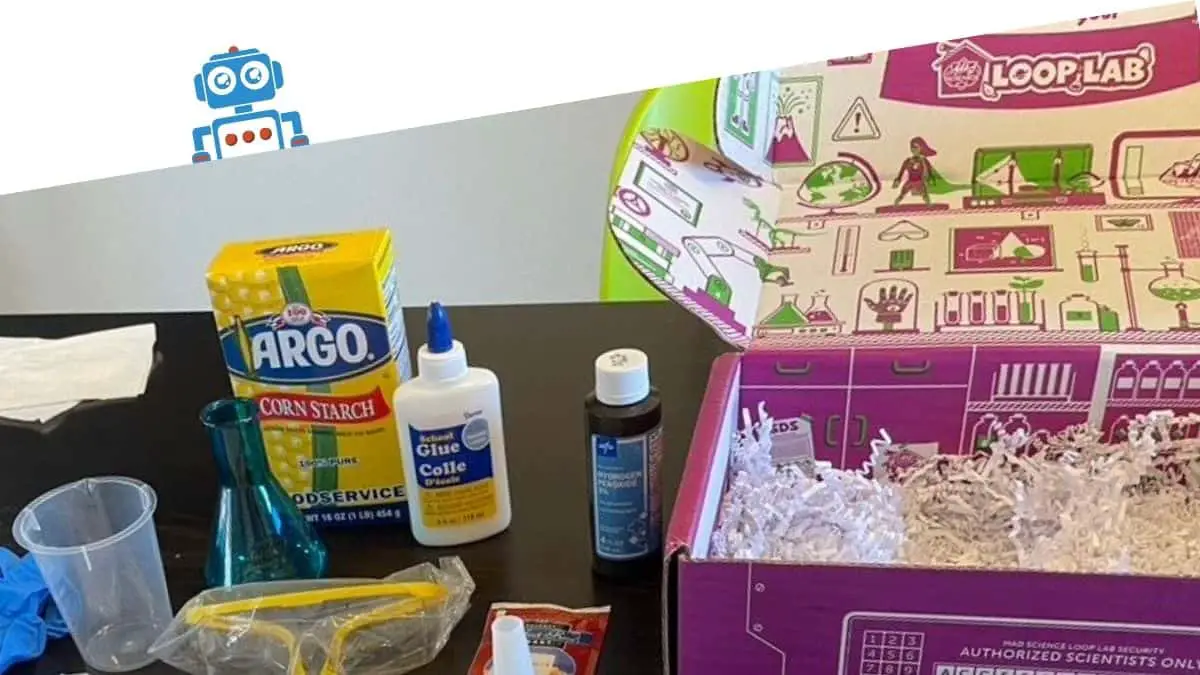Loop Lab Review: A Mad Science Subscription Box (2024)
Looking for holiday gift ideas for kids (that they’ll surely love even after the festive season)? This might be what you’re looking for!
We recently had the opportunity to review a Loop Lab box from Mad Science and here’s what we have to say…
The Mad Science Loop Lab Gross Science experiment box is a fun and informative box with three science experiments PLUS some bonus activities. It’s just one of six fun different boxes where each box is targeted for children 8+, which is age-appropriate for a child completing the experiments independently. I did this box with my 4 year old and the experiments, activities, and materials are fun and appropriate for younger children with adult participation.
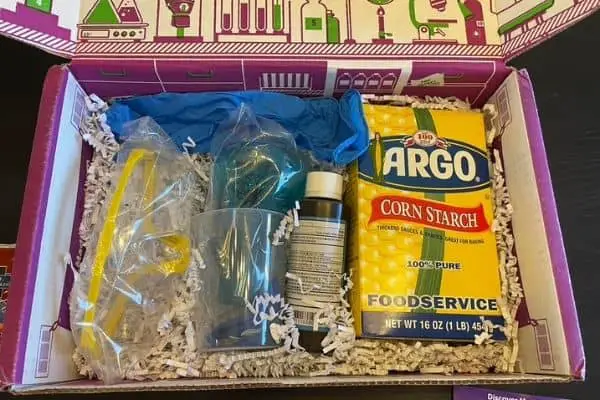
Our box–Gross Science–included three experiments:
- Foaming fountain
- DIY ooze ball
- Ghost goo
All three are experiments you likely did in high school science classes and are fun, interesting, tactile, and engaging examples of chemistry at work.
Loop Lab has done a few things that set them apart from other STEM subscription boxes for kids. I really like how…
- They are committed to reducing waste and limiting packaging. I noticed this before I had read the booklet, I greatly appreciate this feature.
- The experiments let the science stand out without losing the fun factor. They don’t include a lot of added extras like color or glitter, but in my opinion that makes the experiments more likely to succeed and goes with the lower-waste approach.
- The written instructions and explanations are really straight-forward and clear, distilling scientific ideas to the key components that are accessible to younger children and setting a great foundation for learning and growing.
The Loop Lab box is a huge hit, with fun educational experiments, extras to make a child feel like a true scientist, and minimal waste!
What’s in the Box?
In the box, you will find all of the key equipment and ingredients needed to complete four experiments. There are a few things you’ll provide from home, but they are truly standard items–no shopping required!
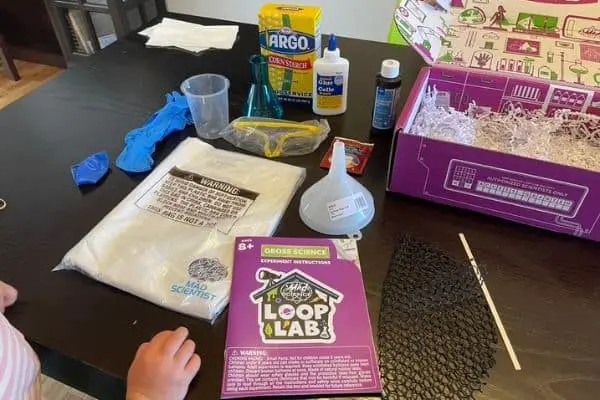
Inside this box, you’ll find:
- safety glasses
- a lab coat
- latex-free gloves
- beaker
- flask
- funnel
- balloon
- white glue
- 3% hydrogen peroxide
- corn starch
- yeast
- rubber band
- stir stick
- and mesh fabric
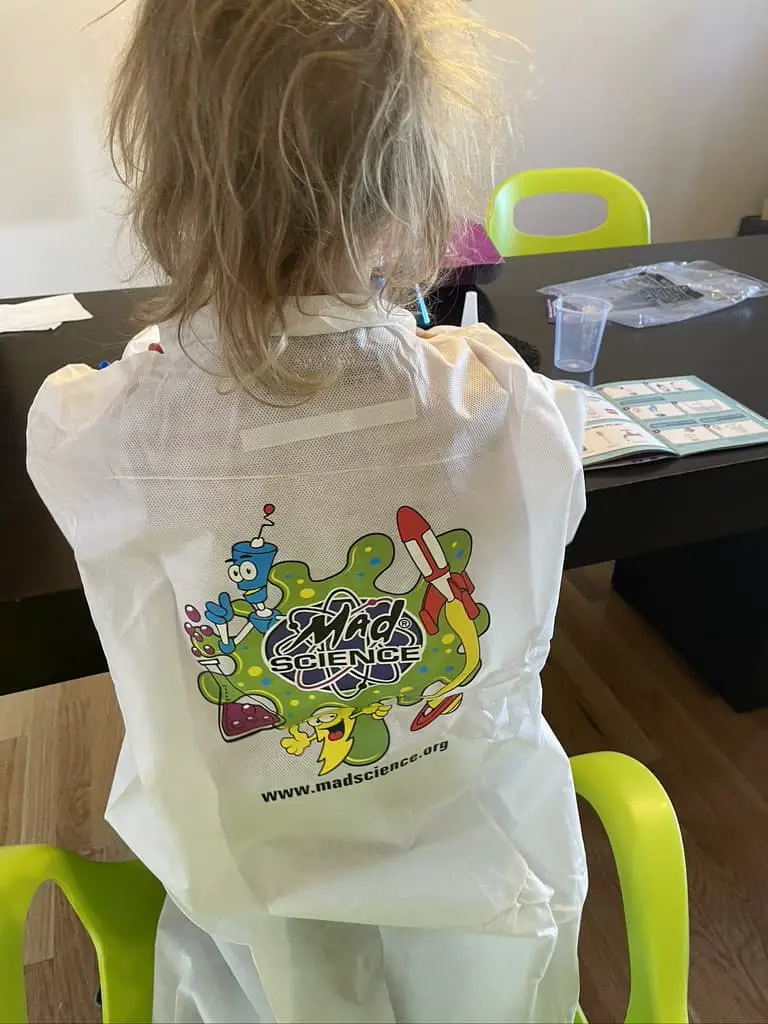
From home, you’ll provide a:
- bowl
- tablespoon
- liquid dish soap
- water
- And paper to protect the work surface
If you choose to do the bonus experiment, you’ll also need an egg and a resealable bag.
I love that the glasses, lab coat, beaker, flask, and funnel are all intended to be reused for future experiments and games, giving the whole box a lot of longevity. In addition, the ingredients that are provided are common: if you want to repeat any experiments, it’s likely you have most if not all on-hand already and can easily buy anything you don’t already keep around the house. This, to me, is a really nice feature.
For those living in a smaller town or who would like to repeat an experiment, it’s nice to know that you can easily replenish the ingredients. I’ve done other boxes that require you to buy some of the key ingredients and, in some cases, it wasn’t easy for me to get them locally. For me, a kit should include as much as possible to reduce the amount of extra time and money you’ll need to spend.
Design
This is a well-designed experiment box with the right mix of equipment, well-written instructions, and fun experimental outcomes.
Instructions
The instructions are clear, brief, and easy to follow. The experiment starts with a brief tutorial about how to use your beaker and flask and how to measure liquids and powders in each piece of equipment. Measuring accurately is a key skill for getting good results in chemistry. The concepts are simple, but not always intuitive (e.g., measuring the lower part of the meniscus when using a plastic measuring container). These are great skills for kids to learn and nice concepts to introduce early on. The instructions for each experiment are accompanied by clear pictures and language appropriate for children to follow.
Experiments
Each experiment took between 10-15 minutes to complete (for me and my 4-year-old); they likely would take a bit more time for an older child working more independently. The steps are straightforward, well-described, and very achievable. The results are all fun and illustrative and the box was a success.
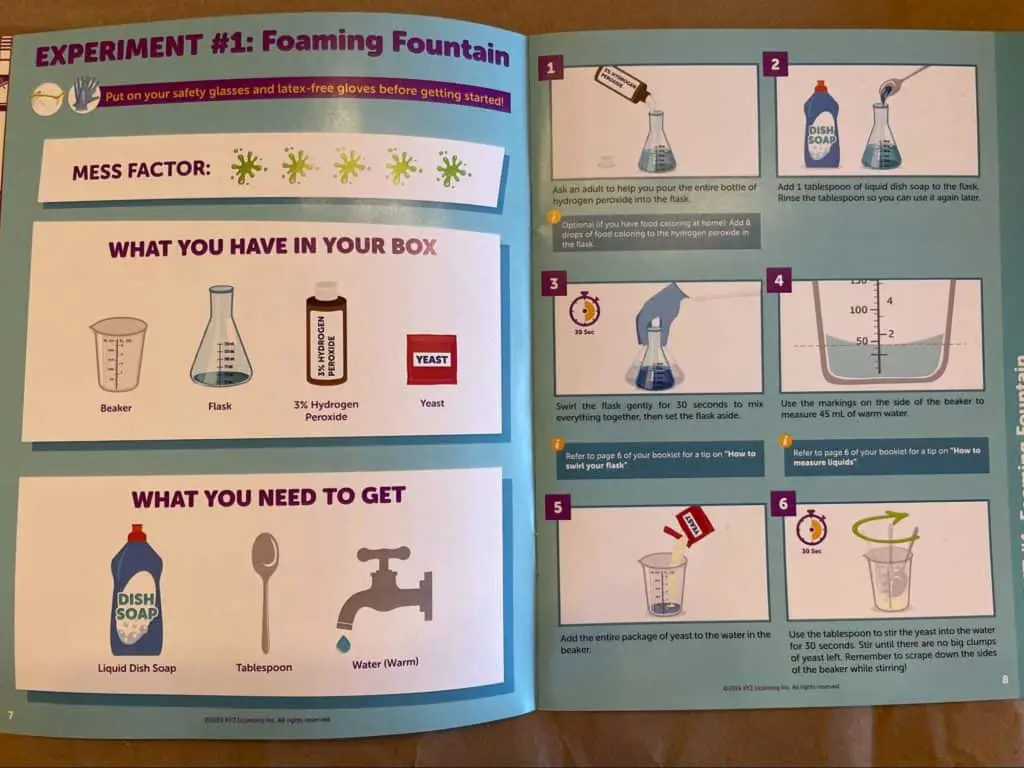
Experiment 1: Foaming Fountain
Volcanoes at home are always a hit. I’ve done them before with other science boxes and on the fly with snow and some ingredients I had on hand. It’s something my daughter requests on a semi-regular basis, so for us, this was a great start.
The volcano in this experiment uses hydrogen peroxide, yeast, dish soap, and water to create a frothy, long-lasting eruption. It is well-designed, using the beaker and flask to measure and mix the ingredients with clear and easy-to-follow instructions. My daughter was able to complete each of the steps with my guidance (but very minimal physical support). She learned about measuring, got to mix (a current favorite activity), and watch the volcano erupt in the sink.
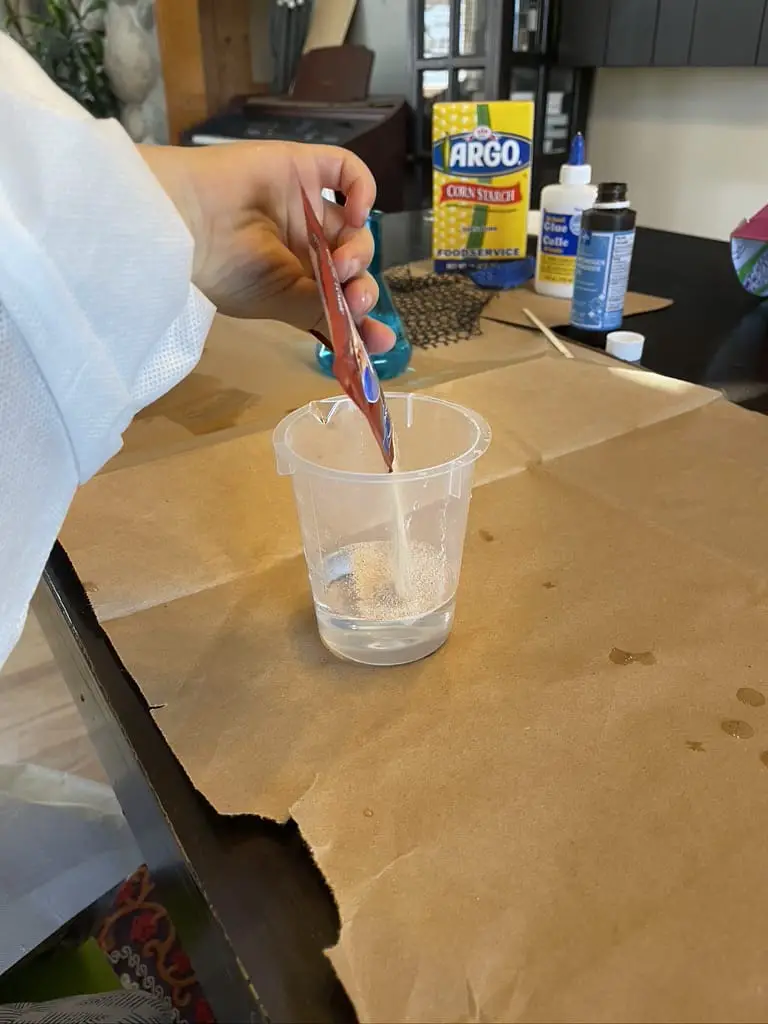
I definitely recommend using the sink for the final step, as there was quite a lot of mess! It was no issue when contained but definitely could have caused some chaos if we had let it erupt on the dining room table. The “how does it work” section gives a really nice definition of catalyst, relating it to the experiment while also describing the chemistry of this reaction. Overall, this was a win for me!
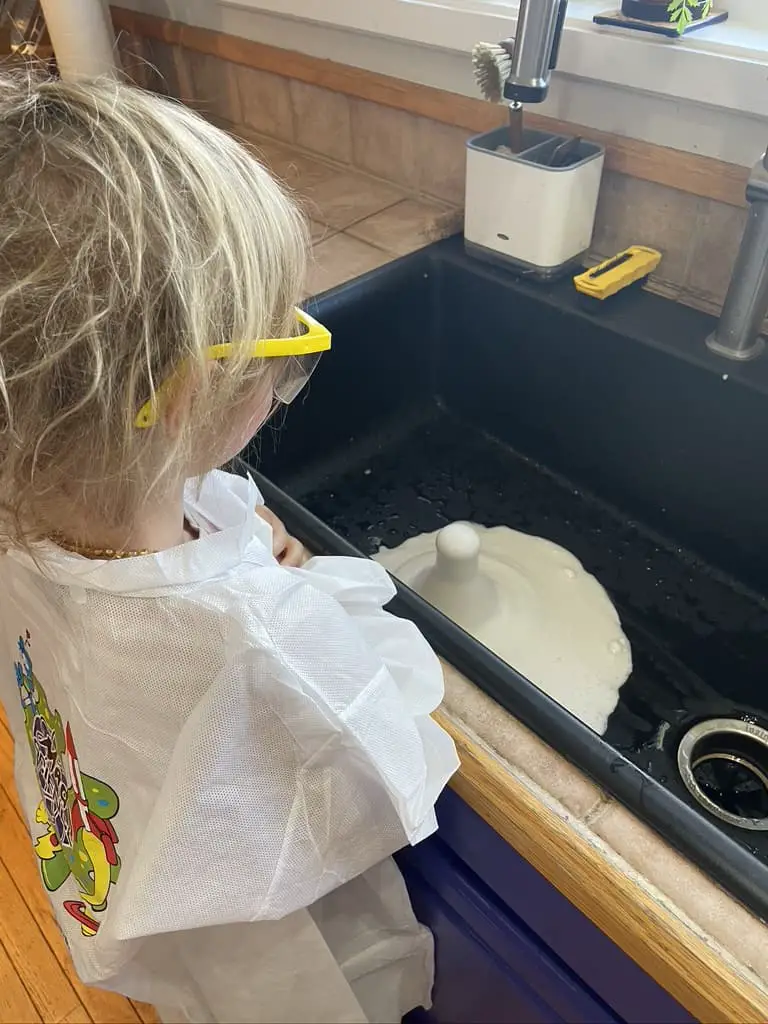
Experiment 2: DIY Ooze Ball
Balloons and squishy substances, it’s hard to imagine a kid who doesn’t like that!
In this experiment, you will create a thick, gooey liquid that goes into a balloon, which you then cover with mesh to create a squeeze ball. It reminded me of a cross between something from ghostbusters and those flour-filled “stress balls” we made as kids.
The ooze is made with glue, corn starch, and water. The high viscosity of the ooze makes it a little more challenging to work with and I had to help my daughter with this more than the others, simply because it was difficult to mix the ingredients. It also took us some time to get the liquid into the balloon. Once completed, this was her favorite activity, as it was really engaging to squeeze the balloon and try to get the ooze ball to pop through the mesh holes.
I had two minor difficulties here: the liquid was perhaps too viscous, and the balloon is pretty fragile. If I could re-do it, I would add a bit more water to the ooze so it flowed a touch more and was a little easier to squeeze once in the balloon. I also live in a really dry climate–often when I bake, I need to add extra water/liquid to get an appropriate consistency–so this is something I’m prepared for. I think we might have had a longer-lasting ooze ball if I had added a bit of water to decrease the viscosity even a very small amount.
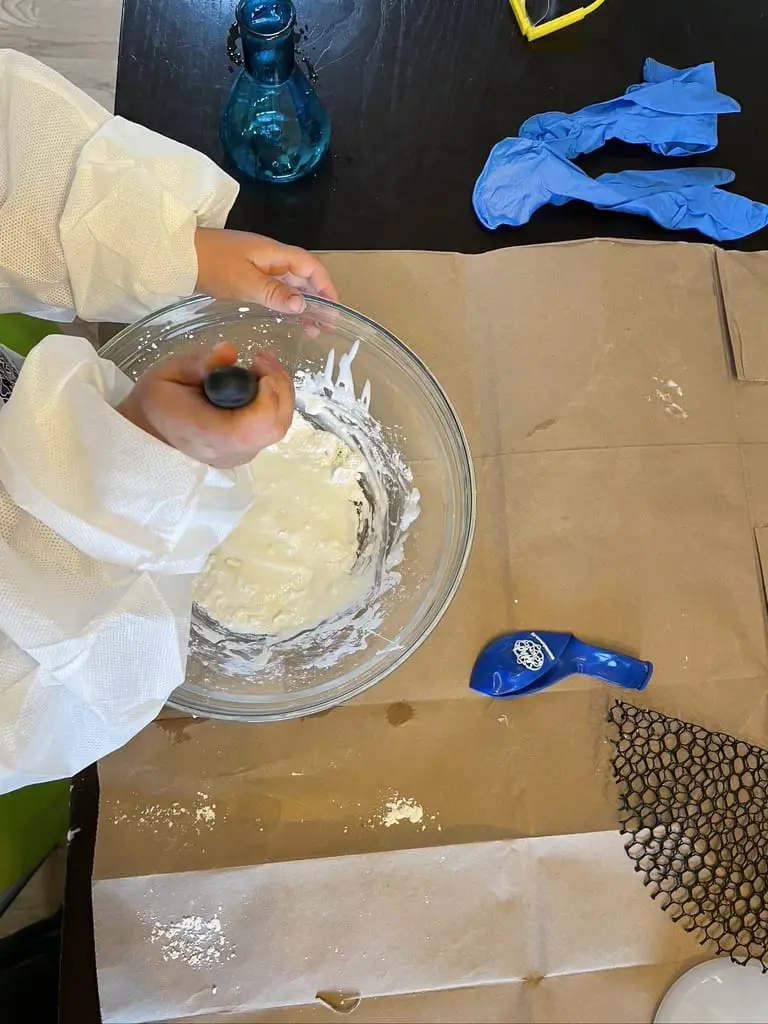
The “how does it work” does a nice job defining viscosity and getting your child thinking about how their experience with the ooze relates to other liquids and conditions. It also brings us back to volcanoes, which is a nice tie-back to the first experiment. I always appreciate a teacher who can tie together concepts that might seem unrelated.
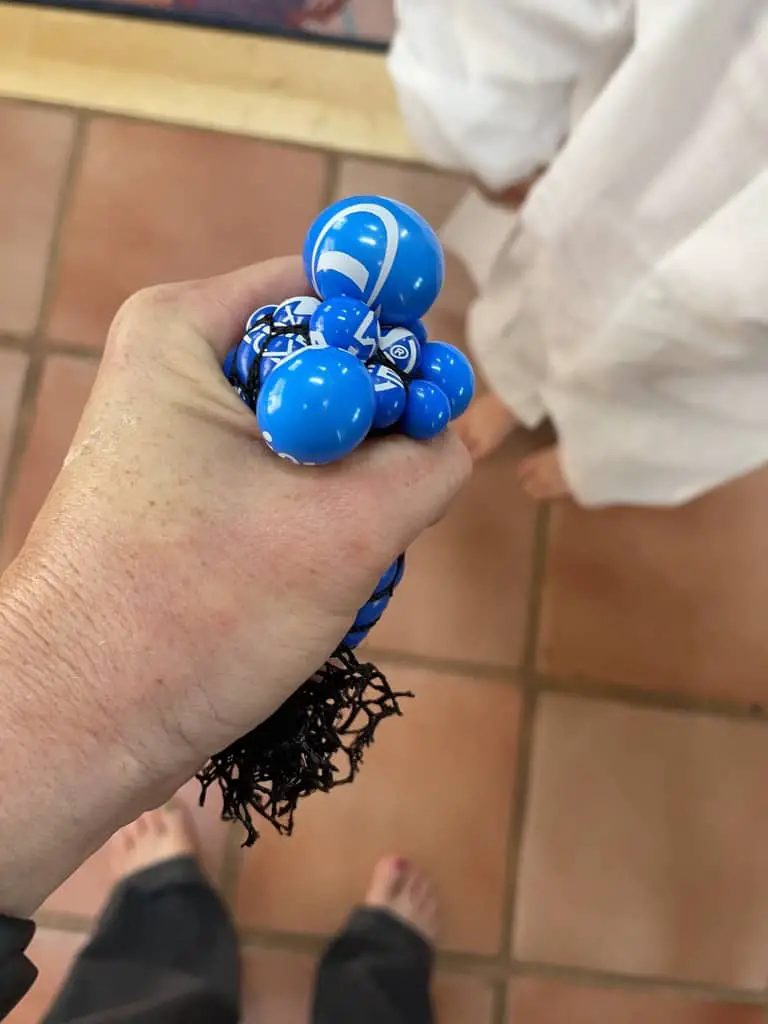
Experiment 3: Ghost Goo
Non-Newtonian fluids, my personal favorite! I love the simplicity of this experiment and I am a sucker for the end result. Non-Newtonian fluids, if you’re not familiar, act as a hard solid when you squeeze them but run like a liquid when there is no pressure. It’s fascinating, somehow gooey and oozy, and dry and solid at the same time.
This experiment is so simple and great for kids of all ages. All it takes is the right ratio of cornstarch and water, with a bit of mixing. Then you can play with the goo to your heart’s content. The best part is that it’s easy to clean up (after all, it acts like a solid when you pick it up) and is completely non-toxic. This is also the base for the bonus experiment, a classic save the egg from cracking affair.
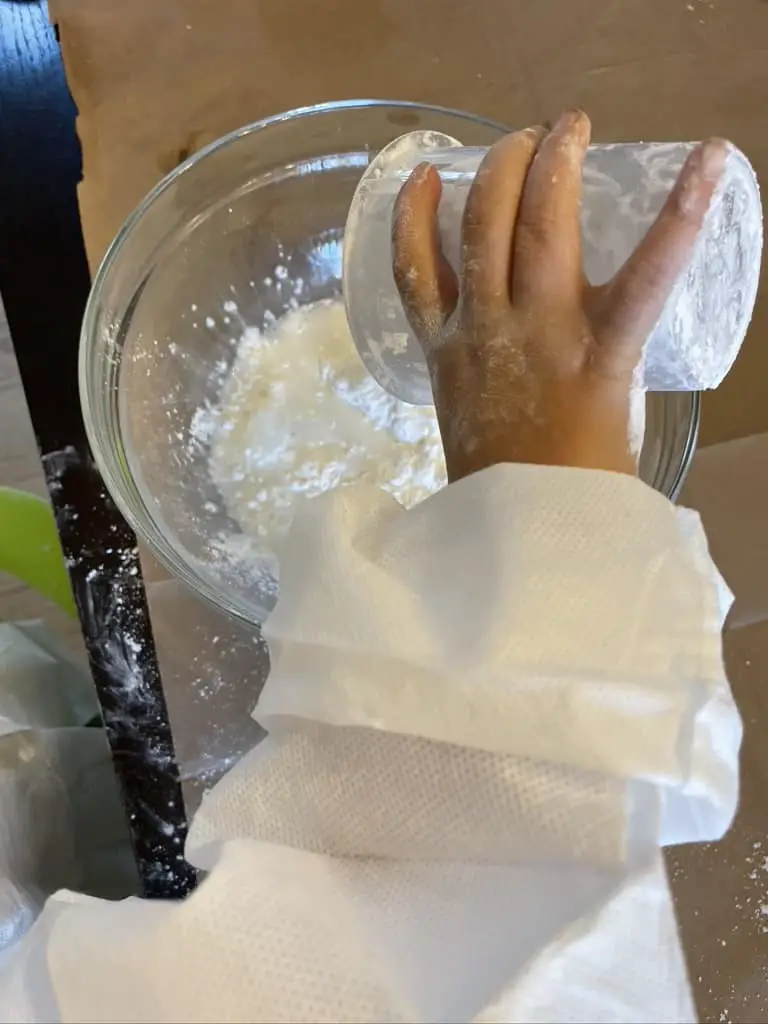
Like the ooze ball, I think my ghost goo could have used a bit of extra water, but the experiment was still a satisfying success. My daughter also loved playing with it and really enjoyed putting on the included gloves to mix and play with it. As with the other experiments, the “how does it work” explanation is really nicely done, with simple and clear descriptions that are approachable and age-appropriate.
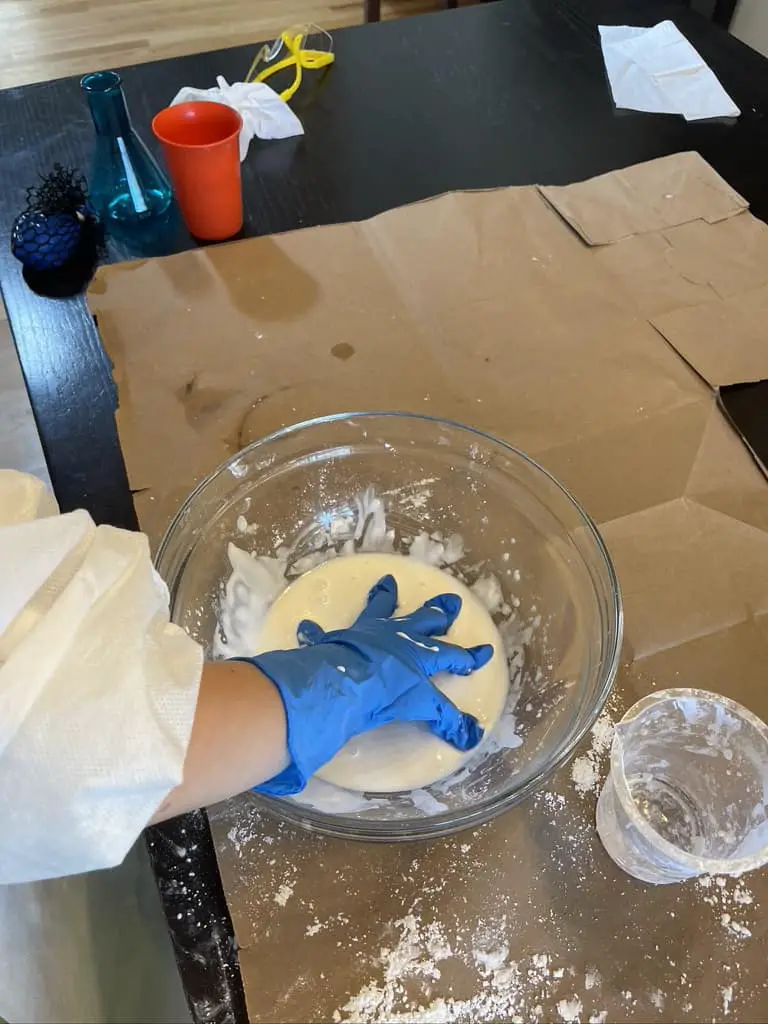
What I Would Improve
There are two things I think could be improved:
As noted above, I live in an area with extremely low humidity and I think each of my gross science substances was a bit dry. There is a balance here between learning precision and accuracy by measuring the ingredients carefully and getting the right result. I think the instructions could give a bonus tip to pay attention to wetness: add water slowly, add a few drops extra if things are too hard/dry. Another option might be to include a second stage (or second sub-experiment), where the user adds more water (or other ingredients) to learn how the nature of each fluid changes when the ratios of the ingredients change.
Second, the ooze ball made with a balloon and mesh is quite fragile. The instructions warn about this and explain how to preserve the ball, which was really helpful. In spite of that, ours did break within the day (exploding a mixture of glue and cornstarch all over me!). I don’t have a great solution, given the nature of the product it is probably inevitable. This is the only true shortcoming I found and, honestly it did not take away from the quality of the experiment for us.
Features
The Loop Lab Science Box has a lot of great features, from the real equipment, the lab coat and safety glasses, to the high-quality outcomes achieved with simple ingredients and experiments.
Real Science Equipment
I think a great feature of this box is the included equipment. While I definitely think the focus should be on the experimental outcomes, the truth is that kids love costumes and equipment. Helping them to feel the part while working through the experiments is a nice way to foster engagement and up the fun factor. On top of that, measuring and mixing accurately is really important to achieving success in science, so having good-quality equipment matters. My daughter loved the lab coat, safety glasses, and gloves. In fact, she identified the gloves as her favorite part of the whole box; I’m not sure that is strictly true, but they definitely made an impression!
The beaker, flask, and funnel are good quality and, combined with the instructions for use, make for a great introduction to measuring and mixing. Kids love doing the real thing, and these features really added to the quality of the experience for us.
Real Science Outcomes
I love these classic chemistry demonstrations. By using ingredients that kids (and parents) are familiar with, we learn that chemistry is an everyday activity, not something only for trained “scientists.” To me, this is a really key component of STEM education. When we find a subject approachable and achievable, are comfortable with ingredients and concepts, and have early success, we are more likely to integrate scientific ideas into our lives and understanding no matter what or who we are in the long-term. Not everyone needs to be a trained scientist, but we all can benefit from understanding how our world works and I think that the type of foundation that the experiments in this box provide is hugely valuable.
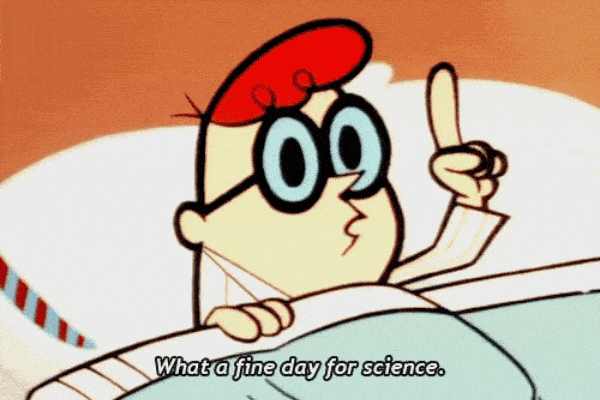
The gross science experiments are all achievable and successful. The results are tactile, exciting, and clearly show the chemical processes at work. My personal favorite is the ghost goo. I still remember learning about non-newtonian fluids in high school chemistry (more than 20 years ago!). It’s a substance that is forever fascinating, and I can never work with cornstarch and not remember my first encounter with ghost goo. Also, it’s still really fun to play with!
In addition to the three main experiments, there are instructions for a bonus experiment using the ghost goo plus an egg and a resealable bag. Since I was working with a preschooler and her attention was starting to wander a bit, we did not complete this part of the experiment. However, we have plenty of extra cornstarch and everything else on hand, so I plan to do it on a day when she’s asking for an experiment (it happens!).
The other bonus activity is a search and find. The inside of the box is printed with pictures and the back page of the instructions encourages children to find and circle six specific pictures printed on the box. This is a great preschooler activity and my daughter worked on it while I finished the parts of cleanup that weren’t a good fit for her help.
Verdict
The Loop Lab Gross Science box is a hit! Both my daughter and I loved it.
Pros
- Straight-forward experiments with clear and easy-to-follow instructions
- Excellent explanations about the science behind the experiments
- Clear definitions of key terms
- Fun and illustrative experiments that engage kids (and adults)
- Non-toxic ingredients that are safe to handle and easy to clean up
- Fun bonus equipment like a lab coat and safety glasses that make kids feel like the real deal and can be used for future experiments
- Less plastic and overall waste than many similar products
- Tips for reusing materials and green disposal methods
- Nice extras including additional experiments and a search and find activity printed right onto the box
Cons
- The DIY ooze ball, made of a balloon and mesh, is quite fragile and ours popped (all over me!) within a day, though this was definitely mostly from over-use.
- The foaming fountain and DIY ooze ball can only be done once. With differences like humidity, temperature, and pressure affecting the experiments, a two-part experiment could be fun and valuable.
Ratings
- Design – 10
- Features – 10
- Educational Value – 10
- User Experience – 9
- Value for Money – 10
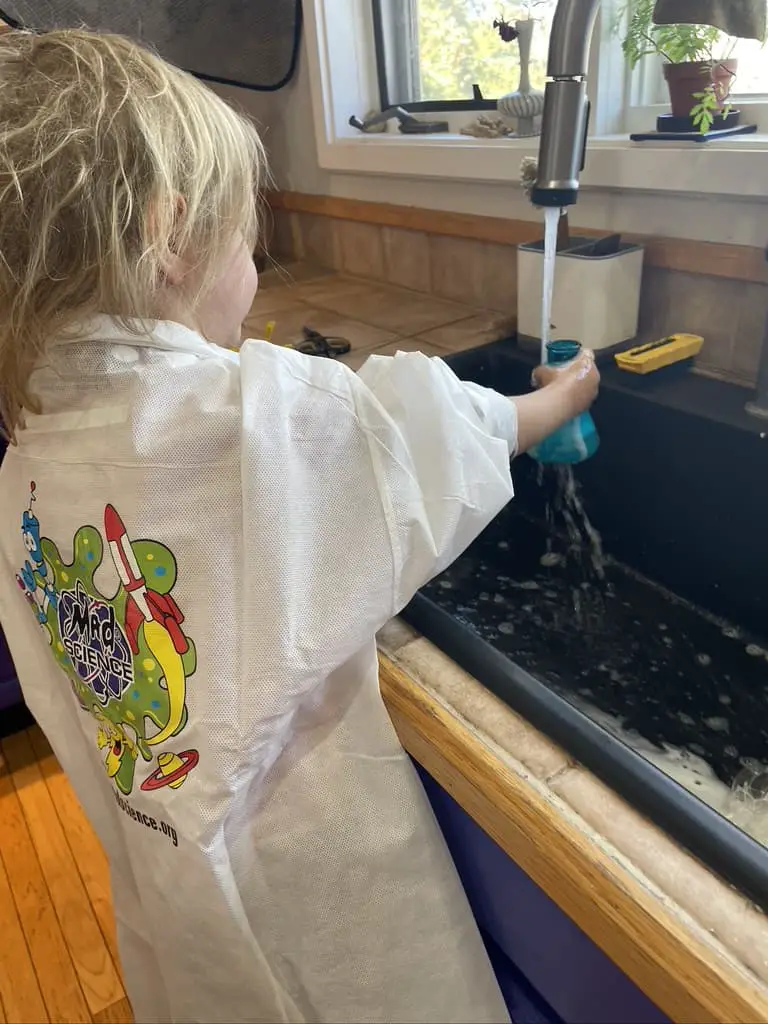
Frequently Asked Questions
Are the experiments safe?
Yes! As with anything, it’s important to ensure ingredients stay away from your eyes and mouth, but everything used is a common, generally safe household item. The instruction booklet has very clear information about using hydrogen peroxide safely.
What age is it designed for?
Loop Lab recommends this box for 8+. That is a good target if your child will be completing the box independently as they will need to read and follow instructions, measure, and pour. It is appropriate and fun for younger children with adult participation; I completed the box with my 4-year-old daughter and we had a great time.
How easy is cleanup?
Cleanup is easy and quick and the instruction booklet includes recommendations for safe disposal, including tips for green disposal options.

